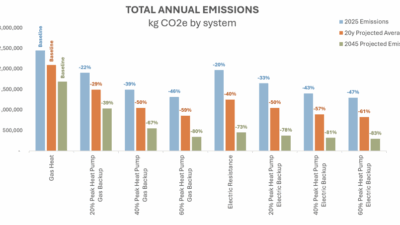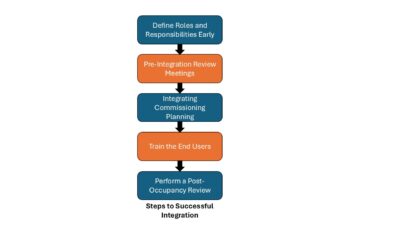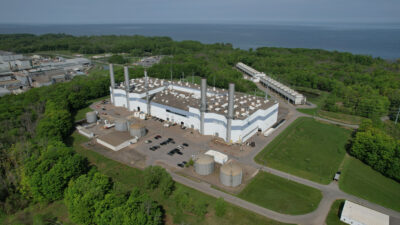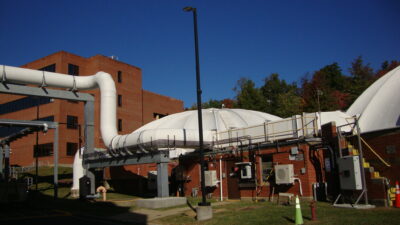Projections show replacing furnaces with air-source heat pumps could reduce emissions by 2028 and with electric resistance heat by 2040 as the grid becomes cleaner.
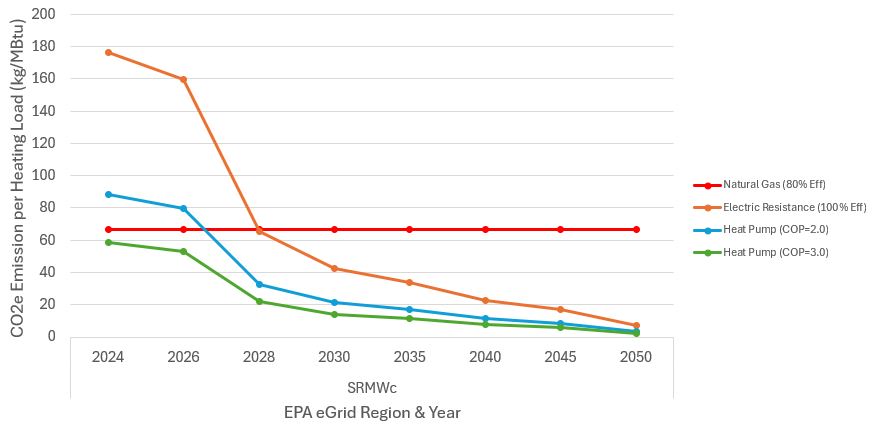
Smith Seckman Reid was asked to evaluate the electrification of several gas-fired heating systems for a manufacturing facility in Missouri. Engineers used a whole-building energy model to compare the existing heaters with electric resistance heat and air-source heat pumps. While both electrified options reduced Scope 1 greenhouse gas (GHG) emissions, there was a net increase in total GHG emissions. This was due to the project being in U.S. Environmental Protection Agency (EPA) Emissions & Generation Resource Integrated Database (eGRID) region SRMW (Midwest), which has one of the highest electric GHG emission factors in the U.S. (183 kgCO2e/MBtu compared to U.S. average of 110).
Reviewing historical GHG emission factors from 2000 to 2022 provided by the EPA shows a downward trend in every eGRID region as electric power plants have switched to cleaner energy sources and as more renewable energy systems have been installed. Furthermore, the National Renewable Energy Laboratory has developed the Cambium datasets that contain a “range of possible futures for the U.S. electricity sector for 2050, with metrics designed to be useful for forward-looking analysis and decision support.” It projects how the U.S. electric sector could evolve across a suite of potential futures based on changes in renewable energy and battery costs, demand growth, IRS tax credits, natural gas prices, as well as the adoption of nascent clean energy technologies such as small modular nuclear reactors and hydrogen combustion turbines. It also considers existing state, regional and federal policies regarding renewable portfolio standards and clean energy standards.
In a nutshell, the mid-case scenario shows a continued decrease in average annual emission rates from 2024 through 2050, such that air-source and air-to-water heat pumps provide a net reduction in GHG emissions in all eGRID regions by 2028 and even electric resistance may provide a reduction in all eGRID regions by 2040.
Referring to Figure 7, the mid-case scenario for eGRID region SRMW suggests that by 2028, the GHG emissions factor might drop enough to make the heat pump option result in a net decrease in GHG emissions. After 2030, the emissions factor might drop enough to make the electric resistance option result in a net decrease in GHG emissions.


